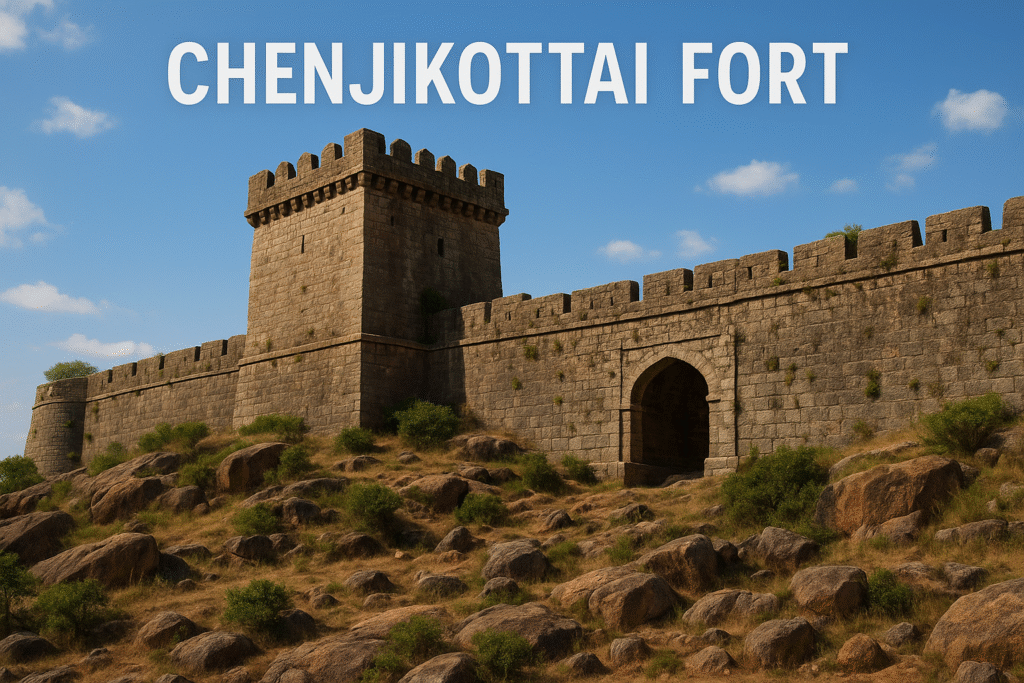Senchikottai: A Forgotten Traditional Fort Deserving Global Heritage Recognition

Red Fort, a World Heritage Site

Senchikottai: A Forgotten Traditional Fort Deserving Global Heritage Recognition
Red Fort has been declared a World Heritage Site by UNESCO.
The fort includes temples, halls, and ponds, a rice barn, a soldiers’ quarters, and a rice barn.
Let’s look at some of the special features of that fort.
An introduction to Red Fort:
Located at the foot of the Western Ghats in Tamil Nadu, Red Fort is not only a place of natural beauty, but also a place that symbolizes the heritage, history, and traditions of the Tamil people.
Let’s see what makes it so special in terms of being declared a traditional ancient site.
Historical background of Red Fort
Red Fort means “Red Fort” and was a center of trade and defense in ancient times.
Old walls and fort buildings, temples full of traditional sculptures, shrines with historical treasures, and paths crossing the Western Ghats.
Unlike the big forts, Senjikottai has a strong historical significance in itself.
Architecture and Heritage
The Sri Lankan-built perimeter walls of Senjikottai, Dravidian temple architecture, and the structures located on the hills highlight its ancient significance.

The architectural structures made of stone and mud,
Dravidian temples and marble inscriptions,
Irrigation systems and tanks
Such antiquity and features show the importance of Senjikottai as a UNESCO World Heritage Site.
It is located in Villupuram district, 160 kilometers from Chennai.
The Maratha king Chhatrapati Shivaji himself was so proud that he praised it as one of the impregnable fortresses in India.
The British called this fort the Troy of the East.
The Cholas called Singapore a country.
Surrounded by nature, large mountains, green mountain forests
It is a tourist destination with a rich and ecological environment.
The cultural events of the country and the Pandya handicrafts are evidence of the ancient tradition.
During the Cholas, the Senji region was called Shikapuri
Why should Senji Fort be included in the heritage?
Cities that have existed for thousands of years are accepted in the heritage.
Similarly, there are two different opinions that the Senji Fort was built by a manna named Senjiyar Kon Kadavan, who came from the Pallavas, and by Anandakoon, who came from the herdsman Kultu.

These are a small version of the ancient military fort
Ancient temples and inscriptions
Authentic village experiences
Later, after the Nayaks came to power, the Senji Nayaks came to power.
This fort was designed during the time of Petha Krishnappa Nayak.
The walls connecting the three hills were built during the time of Petha Krishnappa Nayak. The Nayaks ruled until the Sultan of Bijapur captured it in 1649 AD.
Current status
No war took place in this fort after the British rule. This item was declared a historical monument in 1929.
Currently, you can visit the fort from 8 am to 6 pm as a tourist attraction.
You are not allowed to go up the hill after 3 pm
A fee of 20 rupees is charged per person to visit here.
- Senchikottai traditional fort,
- forgotten forts of Tamil Nadu,
- hidden heritage sites India,
- ancient Tamil forts,
- Senchikottai history,
- undiscovered forts in India,
- heritage site nomination India,
- Tamil Nadu historical places
- Senchikottai UNESCO potential,
- India’s unknown heritage,
#Senchikottai,#TraditionalFortIndia,#TamilNaduHeritage,#ForgottenForts,#HiddenHistoryIndia,#GlobalHeritageSite,#AncientTamilArchitecture,#IndiaCulturalTreasure,#ExploreSenchikottai,#UNESCOIndiaNominee,

